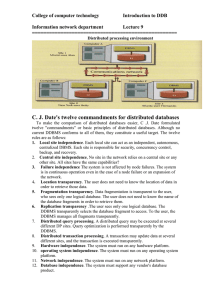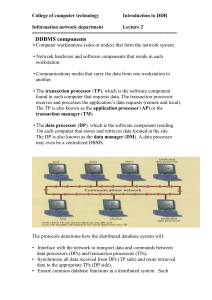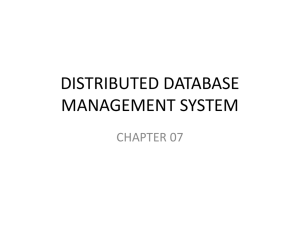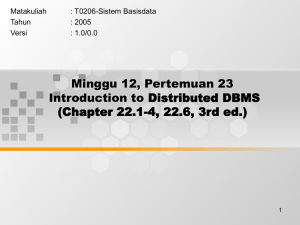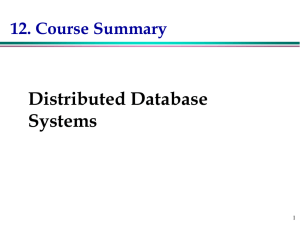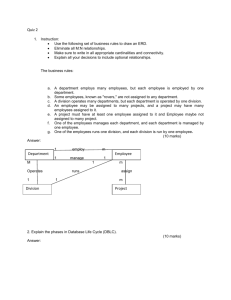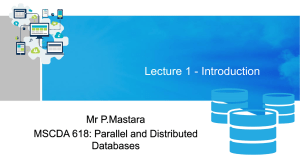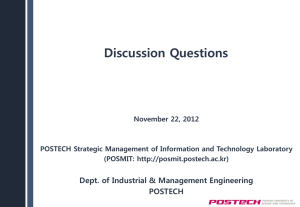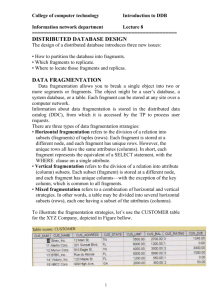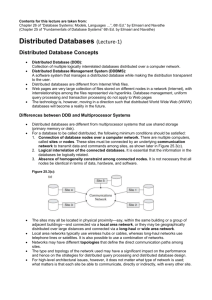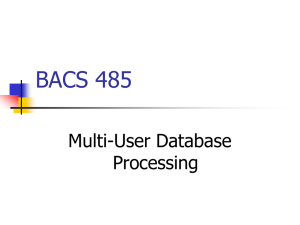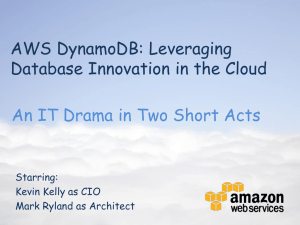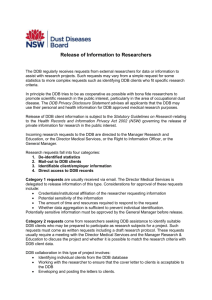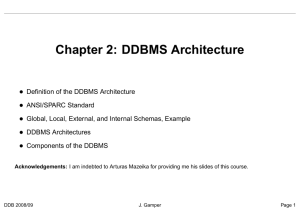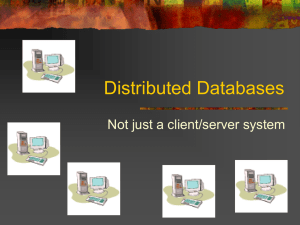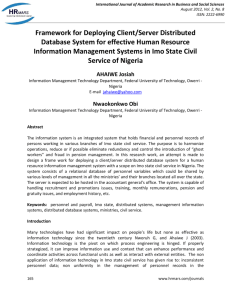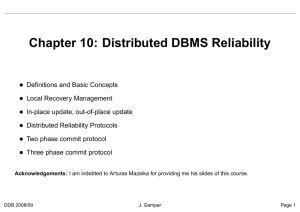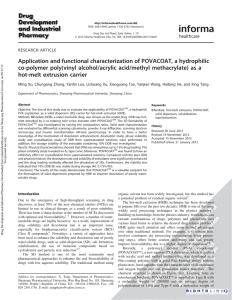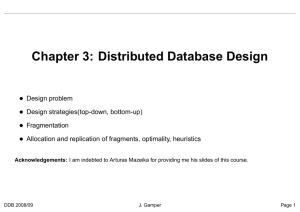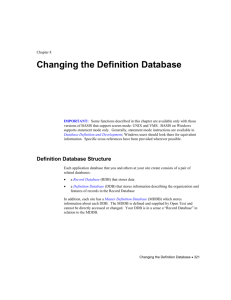Distributed processing
advertisement
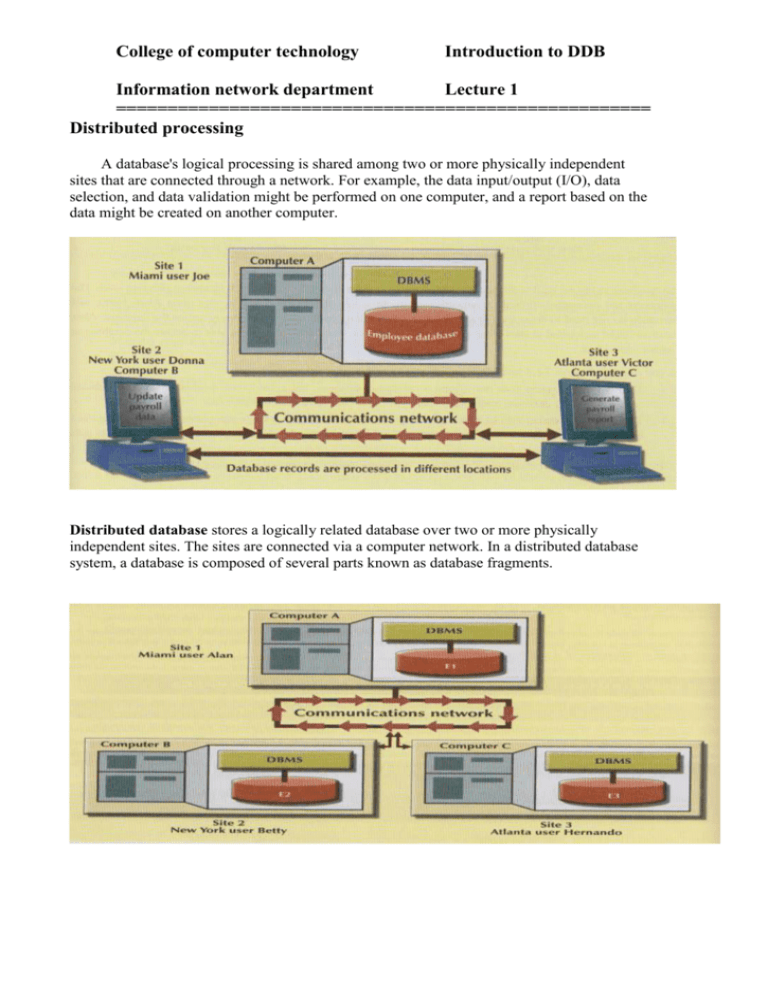
College of computer technology Introduction to DDB Information network department Lecture 1 ==================================================== Distributed processing A database's logical processing is shared among two or more physically independent sites that are connected through a network. For example, the data input/output (I/O), data selection, and data validation might be performed on one computer, and a report based on the data might be created on another computer. Distributed database stores a logically related database over two or more physically independent sites. The sites are connected via a computer network. In a distributed database system, a database is composed of several parts known as database fragments. College of computer technology Introduction to DDB Information network department Lecture 1 ==================================================== From the two previous figures: Distributed processing does not require a distributed database, but a distributed database requires distributed processing (each database fragment is managed by its own local database process). Distributed processing may be based on a single database located on a single computer. For the management of distributed data to occur, copies or parts of the database processing functions must be distributed to all data storage sites. Both distributed processing and distributed databases require a network to connect all components. Distributed database management systems (DDBMS) Governs the storage and processing of logically related data over interconnected computer systems in which both data and processing functions are distributed among several sites. Development history for DDBMS During 1970s, corporations implemented centralized database management systems to meet their structured information needs. such information, generated by procedural programming languages. The centralized approach fell short when quickly moving events required faster response times and equally quick access to information. Database management systems based on the relational model could provide the environment in which unstructured information needs would be met by employing ad hoc queries, the early relational model implementations did not yet deliver acceptable throughput when compared to the well-established hierarchal or network database models. The technological changes that affected database development and design were: Business operations became decentralized. Competition increased at the global level. Customer demands and market needs favored a decentralized management style. College of computer technology Introduction to DDB Information network department Lecture 1 ==================================================== Rapid technological change created low-cost computers with mainframe. The large number of application based on DBMSs Two database requirements became obvious: Rapid ad hoc data access became crucial in the quick-response decision-making environment. The decentralization of management structures based on the decentralization of business units made decentralized multiple-access and multiple location database necessity. The factors were strongly influenced by: The growing acceptance of the internet as the platform for data access and distribution. The wireless revolution. The accelerated growth of companies providing "application as service" type of services. The increased focus on data analysis that led to data mining and data warehousing Problems of centralized DBMS: Performance degradation due to a growing number of remote locations over greater distances. High costs associated with maintaining and operating large central(mainframe) database systems. Reliability problems created by dependence on a central site. Scalability problems associated with the physical limits imposed by a single location Organizational rigidity imposed by the data might not support the flexibility required by modern global organizations. College of computer technology Introduction to DDB Information network department Lecture 1 ==================================================== DDBMS ADVANTAGES AND DISADVANTAGES Characteristics of DDBMS Application interface , application programs. Validation to analyze data Transformation to decompose complex requests into atomic data request components. College of computer technology Introduction to DDB Information network department Lecture 1 ==================================================== Query optimization to fined the best access strategy Mapping to determine the data location of local and remote fragments I/O interface to read or write data from or to permanent local storage. Formatting to prepare the data for presentation to the end user or to application program. Security to provide data privacy at both local and remote databases. Backup and recovery to ensure the availability and recoverability of database in case of a failure. DB administration features for the database administrator. Concurrency control to manage simultaneous data access and to ensure data consistency across debase fragments in the DDBMS. Transaction management to ensure that the data moves from one consistent state to another. A fully distributed database management system must perform all of the functions of a centralized DBMS, as follows: 1. Receive an application's (or an end user's) request. 2. Validate, analyze, and decompose the request. 3. Map the request's logical –to-physical data components. 4. Decompose the request into several disk I/O operations. 5. Search for, locate, read, and validate the data/ 6. Ensure database consistency, security, and integrity. 7. Validate the data for the conditions. 8. Present the selected data in the required format.
